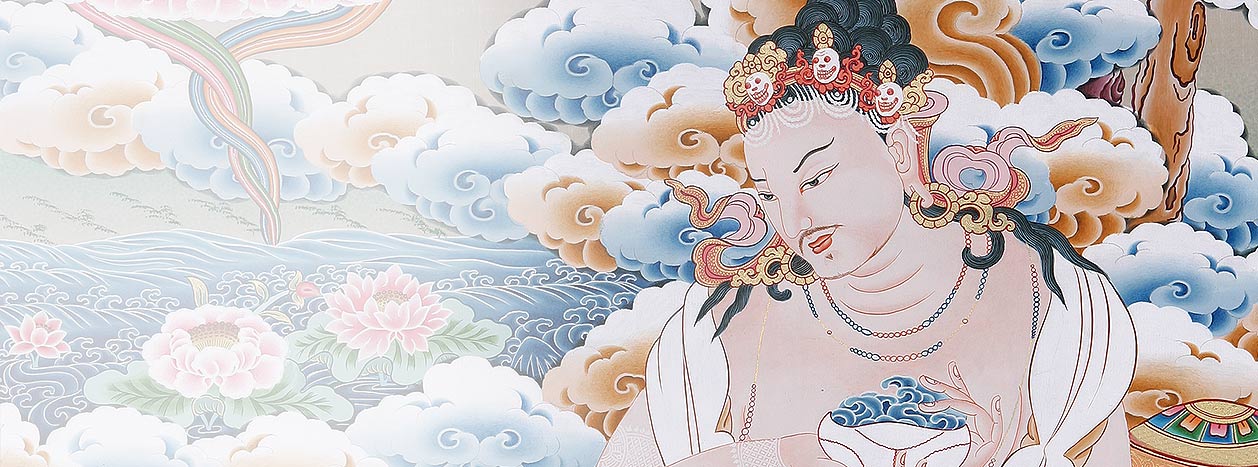Naropa


Born as a Bengali prince named Samantabhadra, Naropa (1016-1100) rebelled at a young age against his royal training. Eight years old, he demanded to go to Kashmir, to follow an intellectual education with the best teachers of the age. Three years later, he finally embarked upon the study of logic, science, grammar, rhetoric and art.
Meanwhile, his parents, according to the custom of the time, had arranged for his marriage to Vimaladipi, a Brahmin girl. The ceremony took place upon his return, but eight years later Naropa insisted on its dissolution, and promptly returned to Kashmir to be ordained as a monk, and to undertake further study.
Several years later, at twenty-eight, his interests drew him to Nalanda University, near Pullahari, famous for its Buddhist philosophers. Naropa was such an intellectual that he became one of the leading scholars of the University in due course. But then a dakini appeared to him, telling him that meditation practice was more important than philosophizing, and that he should search out a certain Tilopa for instructions.
Leaving the monastery, Naropa set out to the East to find this teacher (who is often seen together with Naropa in thangkas). He did eventually meet Tilopa, without recognizing him at first, and was put to twelve hard tests. He persevered, however, mastered Tilopa’s teachings, and finally transmitted the teachings to the next generation of disciples. Among them was the Tibetan translator Marpa, who brought the transmission to Tibet. He also saw to it that Marpa received transmission from other contemporary teachers, to ensure that Marpa unified various transmissions that were current in India at the time.
| < previous | next > |
Follow Karmapa on social media